|
The Hamlet
of Logierait is a rather unprepossessing area of habitation situated a short
distance from the Perth to Inverness Road, (A9); a stones throw from the
village of Ballinluig- which in turn is about twenty miles North of Perth,
and five miles South of Pitlochry, in the North Perthshire area of
Scotland.
The
village does possess a rich history however; being the birthplace of famous
Sociologist Adam Ferguson- a Professor of Natural Philosophy at Edinburgh
University during the Enlightenment period, and son of a local Minister-
and, Alexander Mackenzie, who from a rather inauspicious start to life as
son of a local Stonemason, became Prime Minister of Canada in 1873.
Logierait
Church is said to stand on ground once occupied by an early Christian
mission founded by St. Cedd around 650 AD- and the church has within its
grounds a very interesting Pictish Cross, which takes the form of a sculpted
stone which has, on one side: a knot work-decorated Cross- and on the other,
what appear to be Pictish symbols; namely, a horseman above (possibly
trampling upon) a serpent-and-rod, with the horseman carrying a spear- his
horse wearing an ornamented saddle and bridle. The serpent- and- rod symbol
is of course one which will be familiar to many Freemasons.
Logierait
was the seat of the head regality court of the Dukes of Atholl, and the
court was situated near to the churchyard alongside a large regality prison.
Nearby, was an Ash tree- known as a Dule Tree, or hanging-tree- which was
used to execute an assortment of criminals. Not only were the miscreants
necks stretched on these trees, but their corpses were left to hang there
until such time as they rotted away and fell to the ground.
This
writer has developed an affinity for the village of Logierait, by dint of
the fact he has resided in the nearby town of Pitlochry for almost twenty
years. Indeed, if he had a pound for each time he has driven through the
village during that time, he would be a wealthy man indeed. Family History
Research in recent years has also led to him learning that his
Great-Great-Great- Grandparents- both from the nearby Hamlet of Dull, near
Aberfeldy- were married at Logierait on 15 November, 1834.
However-
as interesting as the foregoing may be, this essay concerns a historic event
which occurred in Logierait on 10 August, 1865- the day the Grand Lodge of
Ancient Free and Accepted Masons of Scotland came to the village to lay the
foundation stone for the memorial to be erected in memory of the 6th
Duke of Atholl.
It is not
the purpose here to detail the involvement of the various Dukes of Atholl in
Scottish Freemasonry over the years- but it is perhaps necessary to mention
some details of the sixth Duke’s Masonic career. George Augustus Frederick
John Murray, the sixth Duke of Atholl, was born on 20 September, 1814, and
succeeded his father James Murray as Baron Glenlyon in 1837- and his uncle
John- the fifth Duke of Atholl in 1846.
He was
initiated into the Scottish Craft in Lodge St. John No. 14, Dunkeld, in
November I841 (now the United Lodge of Dunkeld No. 14). He was appointed to
the position of Deputy Grand Master in the same year, holding that position
for two years, before being elected the 66th (some sources say
60th) Grand Master in November, 1843; retaining the post until his death in
January 1864.
The laying
of foundation stones at various buildings and structures was a prominent
public duty of many Masonic Lodges between the years 1836 and 1872 and the
sixth Duke of Atholl carried out many of these duties in his role as Grand
Master. A number of those which he attended were the laying of the
foundation-stones at: Victoria Bridge, Glasgow on April 9, 1851; the
Freemasons' Hall, Edinburgh, on June 24, I858; and the Wallace Monument,
near Stirling on June 24, I86I. This writer is pleased to report that one of
the Lodges attending the latter ceremony was his own Mother Lodge: St
Michael No. 38 from Crieff.
In 1851,
Queen Victoria’s husband and consort Price Albert was invited to lay the
foundation-stone of the Fine Arts Gallery in Edinburgh. His Grace the Duke
had failed in his attempt to persuade the Prince to join the Masonic Order,
and believing the laying of foundation stones to be an exclusively Masonic
duty, he did not give the proceedings his blessing. In 1861, the Prince
attended a couple of similar events in Edinburgh, which prompted the Duke to
write to the Prince declaring:
“I
consider it my duty, as Grand Master Mason of Scotland, again respectfully
to protest against the infringement of the ancient privilege of the Masonic
Bodies to lay the foundation-stones of public buildings in Scotland."
The Prince
apparently made some enquiry and formed the conclusion that Freemasonry had
no such exclusive jurisdiction, and replied to the Duke accordingly.
This
little spat did not appear to cause any long-term damage to the relationship
between Grand Master Mason of Scotland and the Royal Family, and during the
illness leading to his eventual demise; Queen Victoria paid a personal visit
to the Duke. Following his death in 1864, the sixth Duke of Atholl was
succeeded as Grand Master Mason of Scotland by Brother John Whyte-Melville
of Bennochy and Strathkiness; who carried the additional distinction of
being the Deputy Grand Master and Governor of the invitational and appendant
Masonic body- the Royal Order of Scotland- between the years 1858 and 1883;
and Grand Master of The United, Religious, and Military Orders of the Temple
and the Order of St. John of Jerusalem, Palestine, Rhodes and Malta between
1865 and 1883. The Duke had also held the latter title between the years
1845 and 1863.
A Grand
Lodge of Sorrow was held in honour of the Duke, and a similar mark of
respect was held by the Provincial Grand Lodge of Glasgow which was presided
over by their Provincial Grand Master- Sir Archibald Alison, 1st
Baronet (1792-1867) – a historian, social-critic, criminal lawyer, and
Sheriff of Lanarkshire.
In 1865,
the Duke’s family, friends, and tenants decided to erect a Memorial to the
Duke which was to be sited on a hill overlooking the village of Logierait
and the Vale of Atholl. The Memorial was to take the form of a Celtic-Cross
and cost £1500.00; a considerable sum of money in those days.
As befits
a former Grand Master; the Foundation-Stone for the Memorial was to be laid
by the Grand Lodge of Scotland, with the new Grand Master, Brother John
Whyte-Melville presiding over the ceremony. Grand Lodge would be supported
by large Deputations of Freemasons from Provinces throughout Scotland.
A letter
dated 17 June, 1865 from the Memorial Management Committee to the Grand
Secretary of the Grand Lodge of Scotland- Brother W.A. Laurie Esq., stated:
“At
a meeting held at Logierait on the 10 July, this Committee of Management
for erecting the monument to the late Duke of Atholl considered that the
most suitable time for all the parties for laying the Foundation Stone of
the Monument at Logierait with Masonic honours would be about the 10 August,
and I have been desired by the Earl of Mansfield, the Chairman of the
Committee, to ascertain if this time would be agreeable to the Grand Master
and the Grand Lodge.
May
I therefore request that you will have the kindness to inform me if Thursday
the 10 August will suit Mr Whyte-Melville, and upon hearing from you the
necessary arrangements will be made.
Begging the favour of your reply as soon as may be convenient.”
The
aforementioned Grand Secretary- Brother William Alexander Laurie- is a very
interesting character indeed, being a member of an Edinburgh family which
was involved in Freemasonry and the printing trade over many decades. In
1859 he published a book entitled: “The History of Freemasonry and the
Grand Lodge of Scotland – With Chapters on the Knight Templars, Knights of
St. John, Mark Masonry and RA Degree” which was nominally a second
edition of a book first published by his father Alexander Lawrie in 1804-
which, although in his father’s name- is now widely believed to have been
the work of Sir David Brewster, the Scottish Scientist, Inventor
(Kaleidoscope) and Writer. However, William Laurie acknowledged that the
later book was actually an entirely different work, which he dedicated to
his Grand Master- the sixth Duke of Atholl. (Note: - as can be seen- the
family changed the way they spelt their surname).
A notice
dated 24 July, 1865 declared the following:
“Memorial to the late Duke of Atholl
Notice to the subscribers
The
Committee of Management beg to intimate that the Foundation Stone of the
Monument will be laid by the Grand Lodge of Scotland on Thursday, 10 August
next.
The
procession will be formed at Logierait Schoolhouse, near Ballinluig Station
at 11 o’clock on that day after the arrival of the trains from the South.”
Confirmation of the proposed itinerary was also communicated to the Earl of
Mansfield, in a letter dated 26th July, 1865; sent to his London
address:
“I
am just favoured with your Lordship’s letter of yesterdays date.
I
have been intending for some days to write your Lordship as to the
arrangement for laying the Foundation Stone of the Monument at Logierait on
10 August, but have delayed, expecting to receive information from the Grand
Lodge as to the deputations and numbers that might be expected to be
present, but I have not yet got all the required information from Mr Laurie.
A
circular has been sent from the Grand Lodge to the Lodge of Perthshire and
Forfarshire, and also to Glasgow, inviting their attendance, and I have put
an advertisement in the Perth papers, the North British Advertiser, the
Scotsman, and also in a Glasgow paper, intimating to subscribers that the
Foundation Stone is to be laid by the Grand Lodge on the 10 August.
It
is proposed that the procession should be formed at the new Schoolhouse at
Ballinluig after the arrival of the South trains (say about 1 o’clock) and
that it should proceed across the river by the Railway Bridges (which will
be granted by the Company) to the site of the Memorial.
The
Foundation Stone would probably be laid about Noon, and the procession would
then return to the School House, where a lunch will be given by the Duchess
Dowager, to the Grand Lodge and Deputations and the Memorial Committee, and
at which it is hoped your Lordship will preside.
The
band of the Perthshire Rifles will attend. The trains will arrive at
Ballinluig from the South at 10.19, and parties can return either at 2.44 or
5.53. The Duchess’s Carriage will be at Ballinluig Station to take your
Lordship and the Grand Master to the School House…….”
On the day
of the event, The Highland Railway ran a Special Train to
Ballinluig- full to brimming with a large number of guests and Masonic
brethren from all over Scotland. The Perthshire Journal and
Constitutional Newspaper of Thursday, August 17, 1865 wrote
extensively about the event and reported that it was dampened by heavy
showers of rain- although it would appear that the spirits of those
attending remained upbeat. The site chosen for the Memorial was Tom-Na-Croigh
hill- on which an ancient castle is reputed to have stood- but of which
there is no longer any trace. The hill is about two hundred feet in height;
this author has scaled it, and found that although steps have been built to
accommodate the climb up- the endeavour can still break sweat and quicken
the pulse. It must have been a strain for older attendees of the event, some
of whom would have had the additional encumbrance of Masonic Regalia and
paraphernalia.
Prior to
the foot- procession from Ballinluig, a number of bystanders passed the time
by either obtaining lodgings, or visiting some of the local sites, which
included the “chain-wrought” floating platform which operated as a ferry-
and which crossed back and forth on the nearby River Tummel. However, the
greatest attraction was a shed in which the assembled Masonic brethren were
given their instructions by the Grand Marshall. The procession formed up,
and was led from Ballinluig over the railway bridge to the foot of Tom Na
Cloigh hill- preceded by the band of the Royal Perthshire Militia, and four
of the Duke’s Pipers – playing the Atholl March. The procession is said to
have been half-a mile long. The Perthshire Journal &
Constitutional reported:
“On
arriving at the opening leading to the stone, the procession halted, the
brethren opened to the right and left, so as to leave room for the Grand
Master and office-bearers to pass up the centre. The Grand Master and
office-bearers of the Lodges passed under the crossbars in the usual form,
and the whole of the brethren fell in as it came to their turn.”
A large
number of Grand Lodge officers and Masonic brethren then made the climb up
to the memorial site, some of them carrying the ceremonial wine, corn and
oil to be used in the course of the stone-laying. The Perthshire
Journal & Constitutional further reported:
“The
Working Tools of the Grand Lodge were carried by 12 members of the
Journeyman Lodge (Lodge of Journeymen Masons No. 8, Edinburgh) - the famous
‘Blue Blanket’ being carried by Brother Andrew Kerr”
(Note:-The ‘Blue Blanket’ is an ancient Craft Banner
which has only been carried by this Lodge on four occasions at various
Foundation Stone-Laying ceremonies over the years).
The total
number of persons attending the ceremony that day was about 1500- 564 of
them being Freemasons. The local paper also reported the following list of
Lodges in attendance at the event- along with the number of brethren
representing each; in order of seniority:
Nos.
1. Edinburgh
Menzies Chapel - - - - 8
3. Scone and Perth - - -
- - - - - - - - -70
5.
Canongate and Leith- - - - - - - - - 14
8.
Edinburgh Journeymen- - - - - - - 25
9.
Dunblane - - - - - - - - - - - - - - - - - - 3
10,
Dalkeith Kilwinning- - - - - - - - - - 4
14, St.
John, Dunkeld- - - - - - - - - - - 30
21. Old
St. John, Lanark- - - - - - - - - -6
40. St.
Thomas, Arbroath- - - - - - - - - 7
46. St.
John, Auchterarder- - - - - - - - 8
47.
Operative, Dundee- - - - - - - - - - - 7
48.
Ancient, Dundee- - - - - - - - - - - - 20
50. St.
John Inverary- - - - - - - - - - - - 3
60. St.
John, Inverkeithing- - - - - - - - 3
66. St.
Ninian, Brechin- - - - - - - - - - -7
72. St.
John, Kirkcaldy- - - - - - - - - - 34
74. St.
Andrew, Perth- - - - - - - - - - - 23
78. St.
David, Dundee- - - - - - - - - - - 16
85.
Kirknewton and Ratho- - - - - - - -13
90.
Forfar Kilwinning- - - - - - - - - - - 14
105.
St. John Operative, Coupar Angus-10
106.
Lindores, Newburgh- - - - - - - - - 3
121.
St. Cyre, Auchtermuchty- - - - - - 6
122.
Royal Arch, Perth- - - - - - - - - - -12
134.
Robertsons, Cromarty- - - - - - - - 6
151.
Edinburgh Defensive Band- - - - 7
152.
Operative, Dunkeld- - - - - - - -25
158.
Thistle Operative, Dundee- - - -5
160.
Roman Eagle, Edinburgh- - - - 4
204.
St. Paul’s, Ayr- - - - - - - - - - - - 4
223.
Trafalgar, Leith- - - - - - - - - - - 6
225.
Forfar and Kincardine, Dundee- 5
254.
Caledonian, Dundee- - - - - - - - - 3
291.
Celtic, Edinburgh- - - - - - - - - - -6
299.
Panmure, Arbroath- - - - - - - - - 20
309.
Lour, Forfar- - - - - - - - - - - - - - 20
317.
Camperdown, Dundee- - - - - - - 10
333.
St. George, Glasgow- - - - - - - - - 3
339.
St. Mary, Caledonian Operative, Inverness-9
349.
St. Clare, Edinburgh- - - - - - - - - 6
384,
Athole, Kirkintilloch- - - - - - - - - 3
392,
Caledonian, Edinburgh- - - - - - - 9
400.
Dunearn, Burntisland- - - - - - - - 25
408.
Clyde, Glasgow- - - - - - - - - - - - - 5
419.
Neptune, Glasgow- - - - - - - - - - - 3.
The
Newspaper also commented:
“The
stone was placed on a pedestal some six feet in height and ten or twelve
feet square, and was supported by four guys. The following was the order
given in the programme in which the parties
took up their positions on the platform.’ The Architect is the first of the
Masonic procession who walks up to the Platform on the East; 2dly, the
Chaplain; 3dly the Grand Jeweller; Grand Deacons; Grand Clerk, Grand
Secretary, Grand Treasurer, Grand Wardens and Substitute; then Grand Master,
Past Grand Master, and Deputy Grand Master, followed by Provincial Grand
Masters and Brethren attendant, all giving way to the Grand Master when on
the platform, and the Substitute taking the right of the Grand Master.
Immediately after the officers of the Grand Lodge had taken their places;
the Rev. Mr. Wilson of Dunkeld offered up an appropriate prayer.
The
Architect having brought forward the necessary workmen, the Grand Secretary
placed a bottle containing a number of Newspapers, coins etc. in the cavity
below the stone. Among these articles was a plate bearing the following
inscription:-
THE
FOUNDATION STONE OF THIS MONUMENT
In
Memory of
HIS
GRACE, GEORGE AUGUSTUS FREDERICK JOHN,
SIXTH DUKE OF ATHOLE K.T.
Most
Worshipful Grand Master Mason of Scotland,
Erected by
Numerous Friends and Admirers of his benevolent and
Manly character
Was
laid by
JOHN
WHYTE-MELVILLE ESQ. OF BENNOCHY
AND
STRATHKINESS
Most
Worshipful Grand Master Mason of Scotland,
Assisted by
The
Office Bearers of the Grand Lodge,
And
by numerous Daughter lodges
On
the
Tenth day of August, in the year of our Lord MDCCCLXV,
And
of
Light IOODCCLXIX.
The
stone was then lowered with the usual Masonic ceremony, the plumb being
applied by J.G.W. Dr. Middleton, the level by S.G.W. Dr. McCowan and the
square by Sir Alex G. Maitland. The Grand Master gave three knocks, and the
wine and oil were poured on the stone by the Wardens, and the Grand Master
then pronounced the Masonic blessing.”
The Grand
Master then addressed the assembled throng and stated that having attended
many stone-laying ceremonies with the late Grand Master- it was of course a
sad duty in having to carry out the ceremony for his late friend and Brother
Freemason; and whilst acknowledging that there were those who thought the
Memorial unnecessary, told of his great pleasure in being asked to do so. He
also thanked and paid tribute to those Freemasons who had travelled great
distances- particularly in those days- to attend the event, stating:
“To
the brethren present, I beg to tender my thanks for their assistance and
co-operation. Many of them have come from far to do honour to the late Grand
Master, and one Lodge I feel called on to refer to specially, which has come
as far as from a distant point of Cromarty. To the deputation of that Lodge,
I beg to tender my most sincere thanks. I don’t know if it is on my right or
on my left, but I beg to thank it. At all events, I am very thankful to the
large deputations that have come forward to assist me on this occasion-to
the number, I understand, of deputations from 40 Lodges”
The Grand
Master then intimated that Her Grace, The Duchess Dowager of Athole would
host a luncheon for the Masonic brethren in the local schoolhouse, and those
for whom there was no room in the school house- they would be catered for in
a shed! The Grand Master then wound up the ceremony by stating:
“I
will conclude by praying the Great
Architect of the Universe to permit this monument to the Duke of Athole- one
all so truly loved- to be finished and erected without hurt or detriment to
any of those engaged in its construction”.
The
procession thereafter returned to the schoolhouse where the luncheon was
enjoyed by around 350 persons; and various toasts and speeches were made.
The event was chaired by the Earl of Mansfield, supported by the Grand
Master and various other dignitaries. The Earl proposed a toast to the Grand
Master Mason stating:
“I
must now ask you to drink to a health which I am sure you will receive with
enthusiasm- it is that of ‘The Right Worshipful Grand Master Mason of
Scotland’. I had the honour of stating to him at the close of the ceremony
today, how much we, the subscribers to this memorial, and also the
inhabitants of this district in general, were indebted to him and the Grand
Lodge and all the Masons for their kindness in coming here and assisting in
laying the foundation stone. I know it has been done at much personal
inconvenience of many of you. I know there may be prejudices and feelings
against Masonry existing in the minds of some, but I believe there are few
who would have been satisfied had the foundation-stone of this Memorial been
laid in a common-place manner, without the forms and ceremony which the
presence of the Masonic body impart to it. It is true I may be prejudiced
the other way myself, being a Mason, but as I am here answering not for
myself only, but for the Duchess-Dowager of Athole, and for the other
lady-subscribers who cannot possibly be suspected to be Masons- I am sure
that they, as well as many of the subscribers in this district, feel deeply
indebted to you for your presence here today. There is a manner in which
certain duties have to be discharged, and I appeal to every one of you
whether I am not correct in stating that, contrasted with other occasions of
a similar nature to this, the duties have been fulfilled in a very able, and
discreet, and sensible manner indeed”.
The Grand
Master Whyte-Melville replied:
“Lord Mansfield and gentlemen, I beg to express to you in the warmest manner
of which it is possible for words to convey, my sense of the very kind way
in which his Lordship has proposed the toast of my name, and for the
especially kind manner in which you have received it. I beg to assure Lord
Mansfield that if, in his estimation, my duties were appropriately
performed, I feel quite satisfied. As Masons, we all do our duty to the best
of our ability, and those who are not initiated can’t know anything about
the matter”.
The Grand
Master then proposed a toast to the Earl of Mansfield, before the event came
to a conclusion with all parties departing to their respective parts of the
country.
In any
event; the actual Memorial was subsequently built to a design by noted
Edinburgh Architect Robert Rowand ANDERSON (1834 – 1921) who amongst his
many other achievements carried out restoration work to Broughty Castle,
Dundee, in 1860/61, and structural alterations to the Holy Trinity Episcopal
Church, Pitlochry, in 1887. He was later knighted for his services to
Architecture, becoming Sir Robert Rowand ANDERSON in 1902.
Blair
Castle- situated in the village of Blair Atholl, just to the North of
Logierait- the family seat of the Dukes of Atholl; is now a magnet for many
tourists from around the globe. The Castle holds a large amount of Masonic
regalia and memorabilia relating to the Masonic activities of the various
Dukes. However, it is doubtful whether any of the tourists are aware of the
Memorial to the sixth Duke- which, despite its age and many years of neglect
is still a magnificent edifice. The Monument stands today, not only as a
tribute to the 6th Duke of Atholl- but, perhaps also as a relic from a
bygone age, when Nobility was regarded with awe and reverence; Foundation
Stones were laid with Masonic pomp and circumstance; and Grand Lodge came to
Logierait.
In
conclusion; this funeral dirge was composed by Brother James Ballantine- the
Grand Bard for the Grand Lodge of Scotland- on the occasion of the Dukes
Grand Lodge Funeral:
“O
wild wails the wind o'er the green hills of Athole,
While deep in the valleys the dark waters flow;
The caverns are moaning, the forests are groaning,
The grey cliffs are shrouded in dense wreaths of woe.
Through glen and through corrie the coronach's stealing,
Round sheiling and cottage sad sounds thrill the air;
In castle and palace, lorn hearts are revealing
Their soul-stricken anguish, in tones of despair.
O'er
the dark night of grief there arose a bright morrow,
And love's morning star shone with warm genial ray,
When our dear widowed Queen and her sister in sorrow,
With pure angel tears washed death's sorrow away.
O heavenly the feeling, that links hearts for ever,
When Royal Humanity points out the way
To life and to love! where no future can sever
Souls blent in harmony, ever and aye.
Well
may the Clansmen lament their brave Chieftain!
Well may we Brothers our loved Master wail!
He who maintained in their pure pristine glory
The Light of the Craft, and the fame of the Gael!
And now, though he sleeps 'mid his own native mountains,
While Lowlands and Highlands one sad sorrow share;
Watered and nourished by love's swelling fountains,
His name in our bosoms shall bloom ever fair."
SOURCES
‘Comment’, History & Heritage Online web page
[http://www.commentonline.co.uk/sub-history/atholl/LogieraitParishGilmore.htm]
‘Ancient Scotland’ web page- Logierait Pictish Cross-Slab
[http://www.ancient-scotland.co.uk/site.php?a=104]
Martin,
Bro. George M, F.S.A. (Scot), P.M. Lodge Dundee St. Mary No. 1149-
‘The Athole Family and Freemasonry’
http://www.lodge76.wanadoo.co.uk/the_athole_family.htm
Lodge St. Michael No. 38, Crieff, web page
[http://www.lodge38.bravehost.com/]
Royal Order of Scotland (USA) web page
[http://www.yorkrite.com/roos/info.html]
Great Priory of Scotland web page
[http://greatprioryofscotland.com/grand_masters.htm]
Watson,
Bro. Ian P, PM, ‘The History of the Blue
Blanket’
[http://www.grandlodgescotland.com/index.php?option=com_content&task=view&id=228&Itemid=29]
Blair Castle Archives, N.R.A.S 234,
Bundle 1534.
Denslow, William R. – ‘10,000 Famous Freemasons’
[http://www.phoenixmasonry.org/10,000_famous_freemasons/Volume_3_K_to_P.htm]
Laurie, William Alexander –‘The History of Freemasonry and the Grand Lodge
of Scotland’
Perthshire Journal & Constitutional Newspaper
Dictionary of Scottish Architects, Biography Report
[http://www.codexgeo.co.uk/dsa/architect_full.php?id=M000041]
Photographs by Kenneth C. Jack,
Author:-
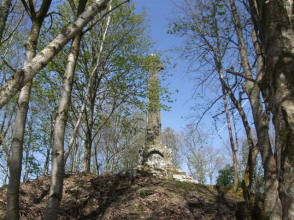
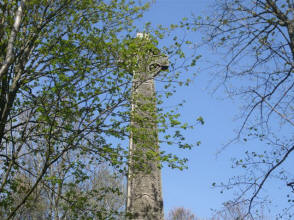
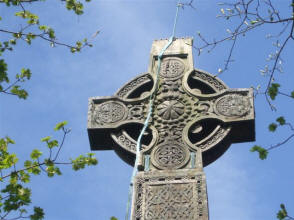

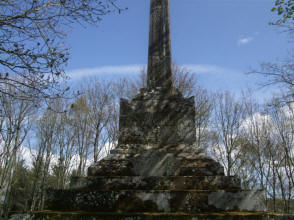
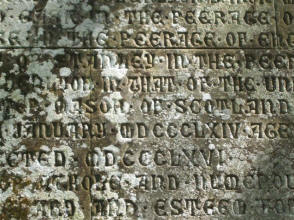
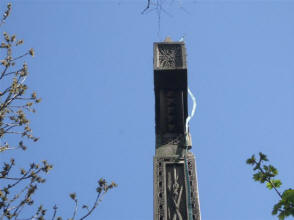

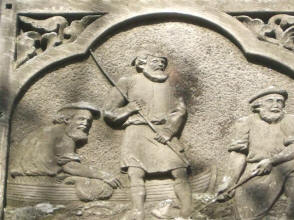
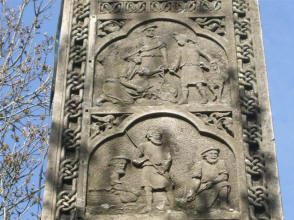
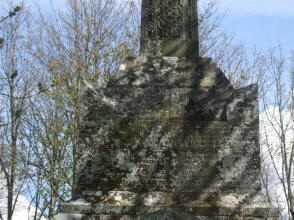
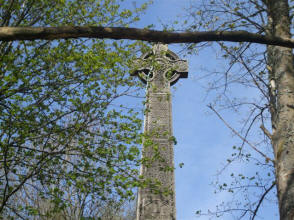
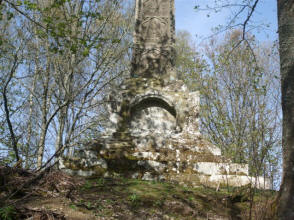
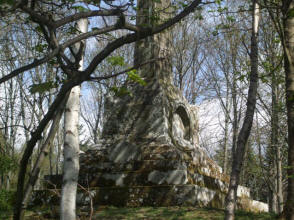
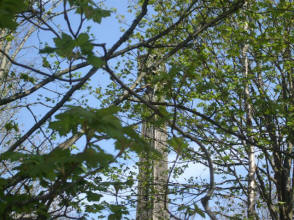
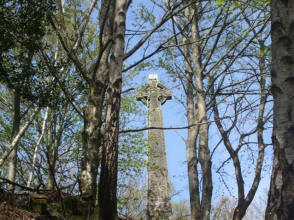

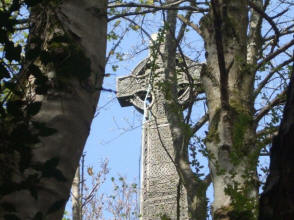
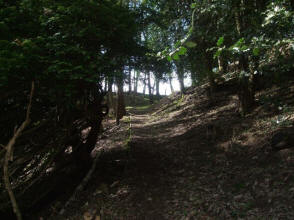
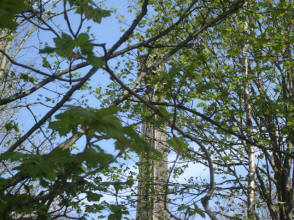
This
article was abridged in the Ashlar magazine from...
Circle
Publications which was formed in 1997.
http://www.circlepublications.com/
The Managing Editor and Founder, Brother Angus N. MacInnes, Past Provincial
Grand Master of Dunbartonshire, decided to set up this charitable company,
limited by guarantee, to promote Scottish Freemasonry. All surpluses
generated by the company are donated to the Benevolent Funds of the Grand
Lodge of Antient Free and Accepted Masons of Scotland.
Circle Publications provides a number of items for the interest and
edification of Freemasons all over the world. Pride of place goes to the
magazine, The Ashlar, first published in 1997. This idiosyncratic
publication is produced thrice yearly, in January, March and September, this
timing designed as the best fit for the Scottish Masonic calendar.
The Ashlar is produced as a high quality magazine, in colour, at the minimal
cost of £2.50 per copy. It is not intended to be an academic journal; the
main focus is on providing a platform where a Mason can express his
opinions. However, the magazine is intended to provide information on
Scottish Freemasonry for Freemasons around the world and therefore is a
superb medium in promoting Masonic education.
The Ashlar is already enjoyed by many with subscribers in every continent.
We trust this website will encourage you to become a regular reader and
support Scottish Freemasonry.
‘Masonic
Publishing’ is an imprint of ‘Circle Publications’ and can be accessed via
the ‘Circle Publications’ website. This sister company provides a number of
very interesting books on both Freemasonry and Scottish History- including
excellent biographies on Scottish heroes Robert the Bruce & Robert Burns-
which will be of great interest to Masons and Non-Masons alike. Check out
the ‘Masonic Publishing’ catalogue! |

